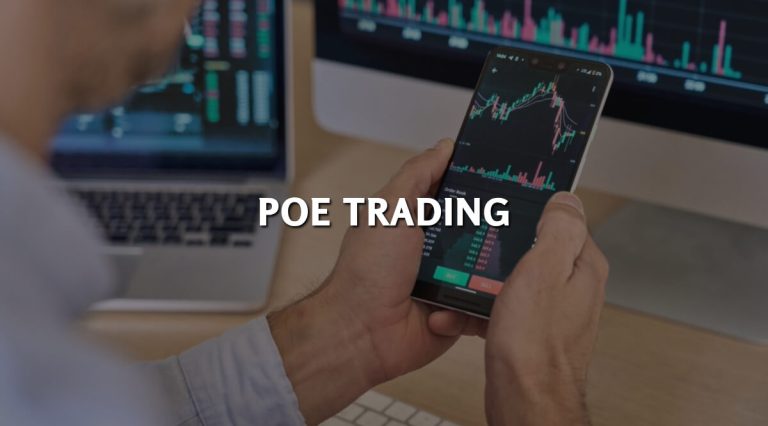PoE Trading: How Does It Work?
People from around the world love video games. Gamers have the opportunity to select from different genres of video games. However, this article isn’t about the popularity of games. It is about PoE trading and Path of Exile, in general.
Let’s start from the beginning. What is the Path of Exile?
It is an online action role-playing game (RPG) developed and published by Grinding Gear Games. Path of Exile was released more than a decade ago. Nonetheless, it is quite popular, even after so many years.
The game mentioned earlier has gained a dedicated following thanks to its deep and complex gameplay, frequent updates, and commitment to maintaining a free-to-play model without pay-to-win elements.
Leagues and seasons
Path of Exile operates on a league system. So, what does that mean?
New leagues (temporary game modes) are introduced every several months. It is noteworthy that the leagues offer unique mechanics,
At the end of a league, characters and items are transferred to the standard game mode, but the fresh start and unique content keep players engaged.
The company behind the game updates the game with new leagues, expansions, and content patches regularly.
The importance of community
Path of Exile is famous for its active community. There are forums and social media groups. Moreover, content creators release guides about the games.
It is important to mention that the in-game economy is player-driven, with a trading system that relies on barter rather than a traditional currency.
For example, gamers can exchange items as well as orbs through trade chats, websites, and community tools, making knowledge of item values and market trends an important aspect of the game.
Many people like that they can play the game free of charge. It is one of the main advantages of the Path of Exile.
Just imagine all gameplay content is accessible without spending money. Besides, the developers of the game have maintained a strict policy against pay-to-win mechanics.
Microtransactions are limited to cosmetic items, extra stash tabs, and quality-of-life features, allowing players to support the game financially without gaining gameplay advantages.
How does PoE console trading work?
Now, let’s return to PoE trading.
First of all, trading in Path of Exile on consoles (such as PlayStation and Xbox) differs from the PC version. There is a different user interface as well as a trading system when it comes to consoles.
Here’s a detailed look at how trading works on PoE consoles:
Trade market interface
In the case of consoles, the game features an in-game trade market interface. The market interface mentioned above aims to facilitate the trading of items between players. This system is more streamlined compared to the PC version.
Listing items for sale
Players have the opportunity to list their items for sale directly from their stash. Here’s how it works:
Navigate to your stash: Access your stash, where your items are stored.
Pick the item: Select the item you would like to sell.
Set the price: You have the right to set the price for your item in various currencies available in the game.
List the item: Once you set the price, the item is listed on the trade market. Other players can now see and buy your item.
Searching for items
In order to locate items you wish to purchase:
Open the trade market: Access the trade market from the main menu.
Search filters: Utilize the search filters to narrow down the items based on type, stats, and price.
Browse listings: Browse through the listings that match your search criteria.
Part two
Buying items
When you find an item you want to buy:
Select the stem: Pick the item from the list.
Make the purchase: Confirm the purchase by spending the required currency. The item will then be transferred to your stash.
Currency exchange
Did you know that apart players can also trade currencies?
The trade market allows you to exchange different types of currencies, helping you gather the specific currency you need for crafting or other purchases.
Quality of Life Features
The console version of PoE includes a number of quality-of-life features to make trading easier:
Favorite searches: Save your search filters for quick access.
Notifications: Receive notifications when your listed items are sold or when someone has a trade offer.
Trade history: You can take a look at your recent trades and transaction history for better tracking.
Tips for efficient trading on consoles
Set competitive prices: Check the market regularly to ensure your prices are competitive.
Keep an organized Stash: Maintain an organized stash to find quickly and list items.
Monitor market trends: Keep track of market trends to understand the demand and adjust your prices accordingly.
Utilize trade chat: Even though the primary method of trading is through the market interface, you can also use in-game trade chat to find potential buyers or sellers.
Action role-playing game
An action role-playing game (ARPG) is a subgenre of role-playing games (RPGs.) Interestingly, ARPG combines the main elements of traditional RPGs with dynamic, real-time combat mechanics.
As opposed to turn-based RPGs, where players and enemies take turns to perform actions, ARPGs require players to engage in combat directly and continuously, often relying on reflexes, timing, and strategy.
Key characteristics
One of the defining features of ARPGs is their real-time combat system. Players control a character (or party) and engage in battles with enemies, using a combination of attacks, skills, and evasive maneuvers. This combat system is typically more fast-paced and requires quick decision-making.
Character development: ARPGs retain the RPG element of character progression. Players earn experience points (XP) by defeating enemies and completing quests, which allows their characters to level up and become more powerful.
Loot and equipment: ARPGs place a strong emphasis on collecting loot. Defeated enemies and completed quests often yield weapons, armor, and other equipment players can use to enhance their characters. The pursuit of better gear is a significant motivator in these games.
Story and quests: ARPGs often feature rich narratives and quests like traditional RPGs. These quests can range from the main storyline that advances the game’s plot to side quests that offer additional challenges and rewards.
Exploration: Players explore expansive game worlds, including dungeons, towns, and wilderness areas. Exploration is often rewarded with hidden treasures, secret areas, and additional lore.
In conclusion, trading in Path of Exile on consoles is designed to be user-friendly, leveraging an in-game market system that simplifies listing, searching, and purchasing items. By utilizing the trade market interface, players can efficiently manage their trades, making acquiring the gear and resources needed for their characters easier.
While different from the PC version’s reliance on external trade websites, the console trading system offers a streamlined experience tailored to the console gaming environment.
The post PoE Trading: How Does It Work? appeared first on FinanceBrokerage.



